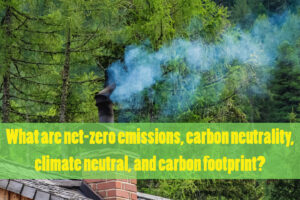Since 5th December 2017, a horrific huge wildfire has been flaming and spreading over a mountain area located in Ventura and Santa Barbara countries, a coastal region northwest to Los Angeles, Southern California. According to media reports, it is the 5th largest wildfire in the State history. The latest news reported by KABC indicated that the out-of-control blaze had scorched 234,300 acres (948 square Kilometers), and an estimate of only 20% were contained.

The wildfire started Thursday morning (December 5, 2017) near Thomas Aquinas College (so called “Thomas Fire”) and spread very quickly. So far, the blaze has burned wildly for eight days, prompting the evacuation of around a hundred thousand of residents. Authorities said that at least 869 structures have been destroyed, with 191 structures damaged and 18,000 threatened, including those of numerous low-income families who have few options for housing. It is a “terrible tragedy for so many people.” A fire-related death has been confirmed, who is a 70-years old person died of “blunt force injuries with terminal smoke inhalation and thermal injuries” on Wednesday (Dec. 6) in a traffic incident during “active fire evacuation”.
According to local authorities, the cause of the wildfire is still under investigation, but it can be sure that drought and climate change have exacerbated the wildfire to explode, given the region’s extremely warm weather and dry conditions. In the area, there was no rain for more than 3 months during this season this year. A news reported by Los Angeles Times indicated that the fire was fueled by plenty of vegetation and trees, aided by extremely low humidity, and worsened by powerful Santa Ana winds that were gusting at speeds of up to 35 mph. At present, “blackened hillsides and charred palm trees with only their trunks remaining have become a common sight” across Ventura and Santa Barbara Counties.

As reported by Los Angeles Times, the wildfire is moving northwest to the city in an area of very dry vegetation that hasn’t burned in about 100 years; the fuels in there are thick and they’re dead so they’re very receptive to fire, said a spokesman for the Ventura County Fire Department. Currently, there are 4,000 firefighters trying to contain the blaze, and authorities said the state has spent more than $34 million on efforts to suppress the Thomas Fire, which has knocked out electricity for tens of thousands of area residents.
According to news reports, Thomas Fire in Ventura and Santa Barbara countries is just the largest one of a series of 20 wildfires ignited across Southern California in early December 2017. Of these wildfires, six became major fires that led to widespread evacuations and property losses, and a total of approximately 8,500 firefighters were battling the six wildfires across the state. The social and economic burden caused by these wildfires is huge. Moreover, emissions from these wildfires will have significant impact on air quality and climate warming in turn.





Leave a Reply